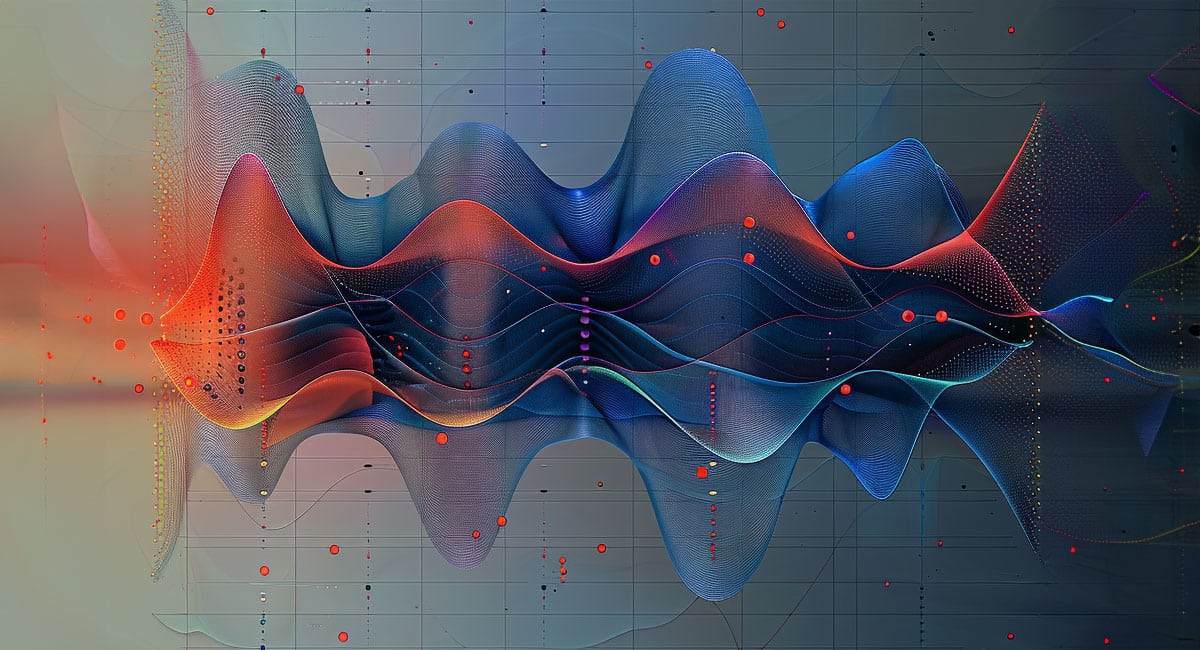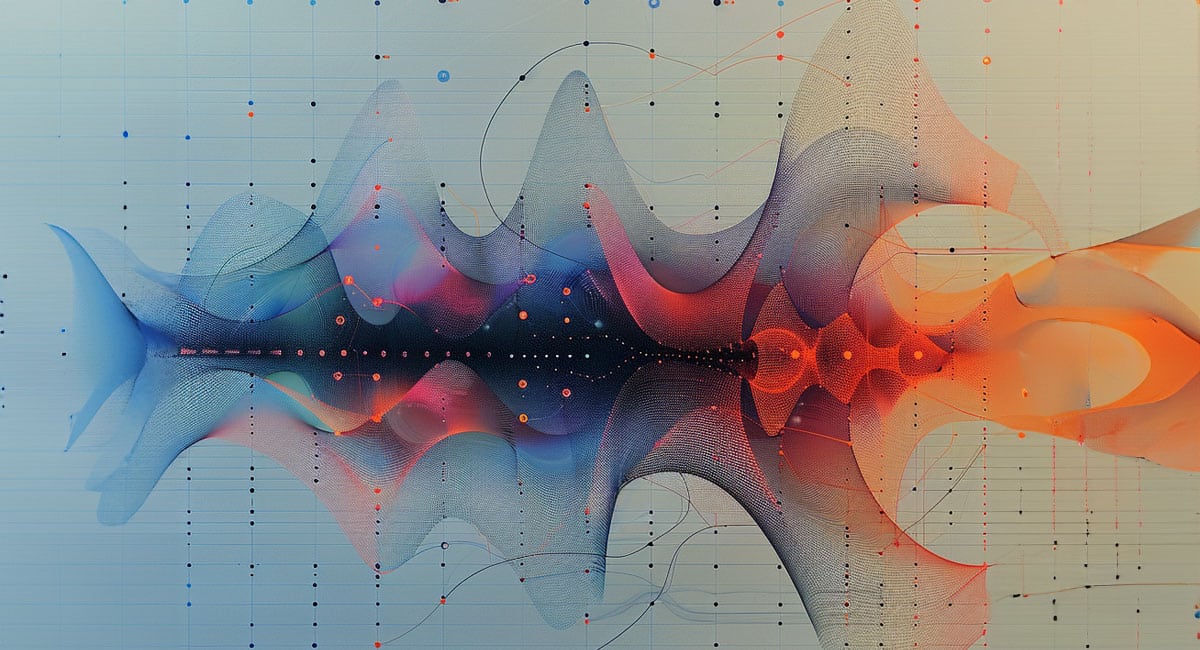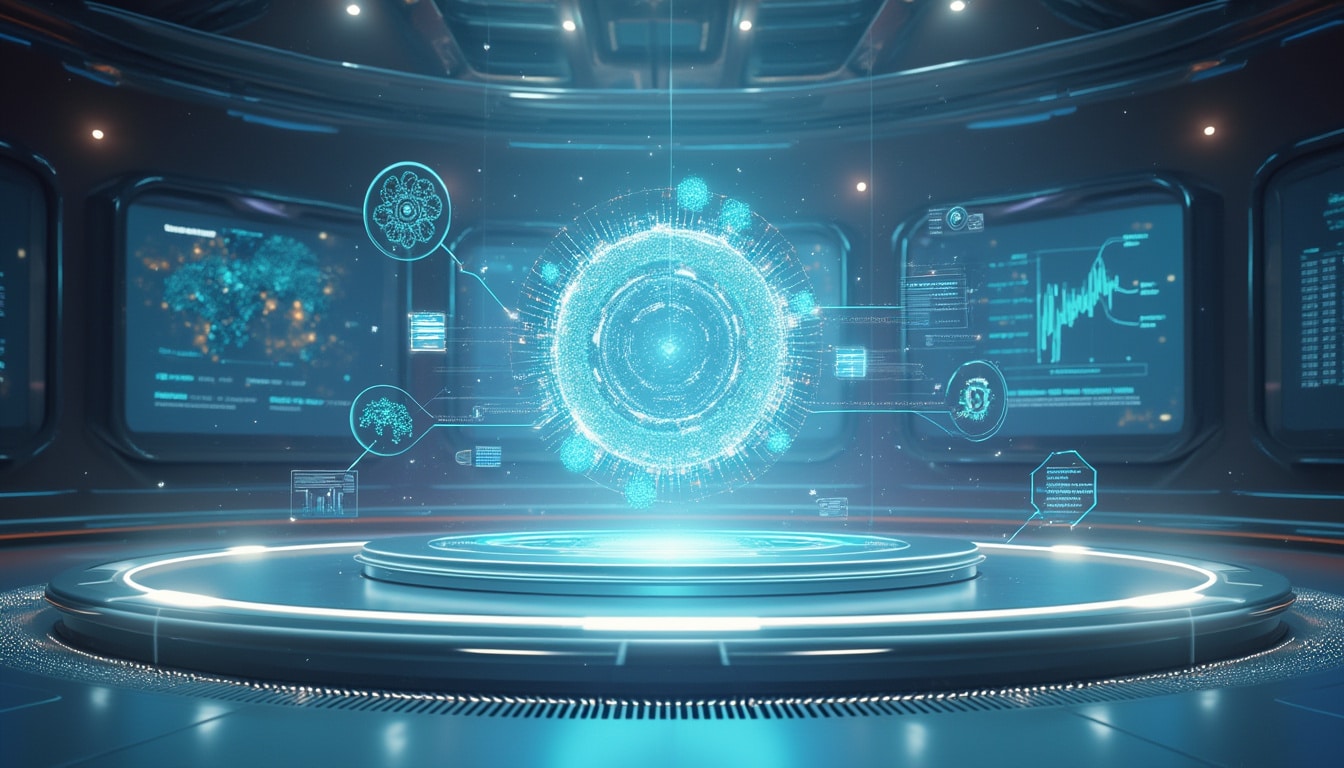Recurrent Neural Networks (RNNs) are a class of artificial neural networks uniquely designed to handle sequential data. At its core, an RNN is like having a memory that captures information from what it has previously seen. This makes it exceptionally suited for tasks where the order and context of data points are crucial, such as revenue forecasting or anomaly detection.
RNNs represent a significant leap in our ability to model sequences in data. This helps us predict future events, understand language, and even generate text or music. In an age where our data is increasingly temporal and sequential, RNNs help make sense of this complexity.
In this article, we explore RNNs, how they work, and their applications. We delve into their architecture, explore their various types, and highlight some of the challenges they face.
What Are Recurrent Neural Networks (RNNs)?
Recurrent Neural Networks (RNNs) are neural networks designed to recognize patterns in sequences of data. They’re used for identifying patterns such as text, genomes, handwriting, or numerical time series data from stock markets, sensors, and more.
Unlike traditional feedforward neural networks, where inputs are processed only once in a forward direction, RNNs possess a unique feature: They have loops in them, allowing information to persist.
This looping mechanism enables RNNs to remember previous information and use it to influence the processing of current inputs. This is like having a memory that captures information about what has been calculated so far, making RNNs particularly suited for tasks where the context or the sequence is crucial for making predictions or decisions.
How Do Recurrent Neural Networks Work?
Recurrent Neural Networks (RNNs) function by incorporating a loop within their structure that allows them to retain information across time steps.
This dynamic process of carrying forward information across time steps lets the RNN tasks that involve sequential input, making them versatile for a range of applications in time series analysis, natural language processing, and more.
Here’s an explanation of how they work:
Sequence Input
RNNs take a series of inputs one by one. Each input corresponds to a time step in a sequence, like a word in a sentence or a time point in a time series.
Hidden State
At the heart of an RNN is the hidden state, which acts as a form of memory. It selectively retains information from previous steps to be used for processing of later steps, allowing the network to make informed decisions based on past data.
Processing Steps
For each input in the sequence, the RNN combines the new input with its current hidden state to calculate the next hidden state. This involves a transformation of the previous hidden state and current input using learned weights, followed by the application of an activation function to introduce non-linearity.
Output Generation
At each time step, the RNN can generate an output, which is a function of the current hidden state. This output can be used for tasks like classification or regression at each step. In some applications, only the final output after processing the entire sequence is used.
Imagine trying to forecast the price of a stock. You can feed the price of the stock for each day into the RNN, which will create a hidden state for each day. Once you’ve added a set of data, you can ask the model to predict the stock’s price on the following day, based on the last hidden state.
Backpropagation Through Time (BPTT)
RNNs are trained using a technique called backpropagation through time, where gradients are calculated for each time step and propagated back through the network, updating weights to minimize the error.
Learning Dependencies
The RNN’s ability to maintain a hidden state enables it to learn dependencies and relationships in sequential data, making it powerful for tasks where context and order matter.

Benefits of Recurrent Neural Networks
Recurrent Neural Networks (RNNs) offer several distinct advantages, particularly in dealing with sequential data. Let’s walk through the key benefits of RNNs.
Sequence Modeling
RNNs are particularly adept at handling sequences, such as time series data or text, because they process inputs sequentially and maintain a state reflecting past information.
This ability allows them to understand context and order, crucial for applications where the sequence of data points significantly influences the output. For instance, in language processing, the meaning of a word can depend heavily on preceding words, and RNNs can capture this dependency effectively.
Memory Capabilities
The internal state of an RNN acts like memory, holding information from previous data points in a sequence. This memory feature enables RNNs to make informed predictions based on what they have processed so far, allowing them to exhibit dynamic behavior over time. For example, when predicting the next word in a sentence, an RNN can use its memory of previous words to make a more accurate prediction.
Variable Length Input Handling
RNNs do not require a fixed-size input, making them versatile in processing sequences of varying lengths. This is particularly useful in fields like natural language processing where sentences can vary significantly in length. Modern transformers used in GPT are much harder to increase in size in terms of input length as the memory demands for transformer input scaling are quite higher.
Parameter Sharing Across Time
By sharing parameters across different time steps, RNNs maintain a consistent approach to processing each element of the input sequence, regardless of its position. This consistency ensures that the model can generalize across different parts of the data. This is essential for tasks like language modeling.
Dynamic Information Processing
RNNs process data points sequentially, allowing them to adapt to changes in the input over time. This dynamic processing capability is crucial for applications like real-time speech recognition or live financial forecasting, where the model needs to adjust its predictions based on the latest information.
Contextual Information Utilization
The ability to use contextual information allows RNNs to perform tasks where the meaning of a data point is deeply intertwined with its surroundings in the sequence. For example, in sentiment analysis, the sentiment conveyed by a word can depend on the context provided by surrounding words, and RNNs can incorporate this context into their predictions.
End-to-End Learning
RNNs can be trained in an end-to-end manner, learning directly from raw data to final output without the need for manual feature extraction or intermediate steps. This end-to-end learning capability simplifies the model training process and allows RNNs to automatically discover complex patterns in the data. This leads to more robust and effective models, especially in domains where the relevant features are not known in advance.

RNNs vs. Feedforward Neural Network
Recurrent Neural Networks (RNNs) and Feedforward Neural Networks (FNNs) are two fundamental types of neural networks that differ mainly in how they process information. Let’s compare them to help you understand their applications.
Architecture
In FNNs, information moves in only one direction—from input nodes, through hidden layers (if any), to output nodes. There are no cycles or loops in the network, which means the output of any layer does not affect that same layer.
RNNs, on the other hand, have a looped network architecture that allows information to persist within the network. This looping mechanism enables RNNs to have a sense of memory and to process sequences of data.
Data Processing
FNNs process data in a single pass per input, making them suitable for problems where the input is a fixed-size vector, and the output is another fixed-size vector that doesn’t depend on previous inputs.
RNNs, on the other hand, process data sequentially and can handle variable-length sequence input by maintaining a hidden state that integrates information extracted from previous inputs. They excel in tasks where context and order of the data are crucial, as they can capture temporal dependencies and relationships in the data.
Memory
FNNs do not have an internal memory mechanism. They treat each input independently without regard for sequence or time.
RNNs inherently have a form of memory that captures information about what has been processed so far, allowing them to make informed predictions based on previous data.
Training Complexity
Training FNNs is generally straightforward because there are no temporal dependencies to consider, which simplifies backpropagation.
Training RNNs is more complex due to the sequential nature of the data and the internal state dependencies. They use backpropagation through time (BPTT), which can lead to challenges like vanishing and exploding gradients.
Use Cases
FNNs are ideal for applications like image recognition, where the task is to classify inputs based on their features, and the inputs are treated as independent.
RNNs are suited for applications like language modeling, where the network needs to remember previous words to predict the next word in a sentence, or for analyzing time series data where past values influence future ones.
Common Challenges of Recurrent Neural Networks
Neural networks, despite their versatility and power, face several common challenges that can affect their performance and applicability.
First, RNNs process data sequentially, which can lead to slower training and inference compared to architectures that can process data in parallel, such as Convolutional Neural Networks (CNNs) and Transformers. Training RNNs can be computationally intensive and require significant memory resources. This is why we use transformers to train generative models like GPT, Claude, or Gemini, otherwise there would be no way to actually train such huge models with our current hardware.
Then there is the vanishing gradient problem. This is where the gradients become too small for the network to learn effectively from the data. This is particularly problematic for long sequences, as the information from earlier inputs can get lost, making it hard for the RNN to learn long-range dependencies.
Conversely, RNNs can also suffer from the exploding gradient problem, where the gradients become too large, causing the learning steps to be too large and the network to become unstable. This can lead to erratic behavior and difficulty in learning.
Like other neural networks, RNNs are also susceptible to overfitting, especially when the network is too complex relative to the amount of available training data.
Finally, there’s the challenge of interpretability. Like many neural network models, RNNs often act as black boxes, making it difficult to interpret their decisions or understand how they are modeling the sequence data.
Types of Recurrent Neural Networks
Recurrent Neural Networks (RNNs) are versatile in their architecture, allowing them to be configured in different ways to suit various types of input and output sequences. These configurations are typically categorized into four types, each suited for specific kinds of tasks.
One to One
This configuration represents the standard neural network model with a single input leading to a single output. It’s technically not recurrent in the typical sense but is often included in the categorization for completeness. An example use case would be a simple classification or regression problem where each input is independent of the others.
One to Many
In this RNN, a single input generates a sequence of outputs. This is useful in scenarios where a single data point can lead to a series of decisions or outputs over time. A classic example is image captioning, where a single input image generates a sequence of words as a caption.
Many to One
This configuration takes a sequence of inputs to produce a single output. It’s particularly useful for tasks where the context or the entirety of the input sequence is needed to produce an accurate output. Sentiment analysis is a common use case, where a sequence of words (the input sentences) is analyzed to determine the overall sentiment (the output).
Many to Many
There are two main variants within this category:
Synchronous Many to Many
The input sequence and the output sequence are aligned, and the lengths are usually the same. This configuration is often used in tasks like part-of-speech tagging, where each word in a sentence is tagged with a corresponding part of speech.
Asynchronous Many to Many
The input and output sequences are not necessarily aligned, and their lengths can differ. This setup is common in machine translation, where a sentence in one language (the input sequence) is translated into another language (the output sequence), and the number of words in the input and output can vary.
Applications of Recurrent Neural Networks
Recurrent Neural Networks (RNNs) have a wide array of applications, thanks to their ability to process sequential data. Here are some notable examples:
Natural Language Processing (NLP): In language modeling, an RNN can predict the next word in a sentence based on the previous words, aiding in text completion or generation tasks. In sentiment analysis, RNNs analyze the sequence of words in a text to determine the overall sentiment expressed, making them valuable for understanding opinions in reviews or social media posts.
Speech Recognition: In speech recognition, an RNN can analyze the progression of audio signals to transcribe spoken words into text. It can identify patterns in the sound waves over time, distinguishing spoken words and phrases with high accuracy, which is crucial for applications like virtual assistants or automated transcription services.
Time Series Prediction: In financial markets, RNNs can analyze historical stock price data to forecast future trends. Similarly, in meteorology, RNNs can use past weather data to predict future weather conditions.
Music Generation: RNNs can learn the structure and patterns in music, enabling them to generate new pieces of music that are coherent and stylistically consistent. By training on sequences of musical notes and their timings, RNNs can produce compositions in a way that a human composer might, creating novel and creative works.
Video Frame Prediction: In video analysis, predicting the next frame in a sequence allows for applications like video compression and enhanced video streaming. RNNs can anticipate the movement and changes in a video from frame to frame, helping in creating more efficient video processing and transmission methods.
Handwriting Generation and Recognition: RNNs can process the sequential strokes in handwriting, enabling them to recognize written text. This is useful for digitizing handwritten documents or notes. RNNs can also create text that mimics a specific handwriting style, which can be used in applications ranging from personalized digital communication to art and design.
Anomaly Detection: In sectors like manufacturing or cybersecurity, RNNs can monitor sequences of data over time to identify patterns and predict normal behavior. They can then detect anomalies or deviations from these patterns, signaling potential issues or breaches.

Variant RNN Architectures
Recurrent Neural Networks (RNNs) have several variants designed to overcome some of their limitations and improve their performance in specific tasks. Here are some notable variants:
Long Short-Term Memory (LSTM)
LSTMs are designed to address the vanishing gradient problem in standard RNNs, which makes it hard for them to learn long-range dependencies in data.
LSTMs introduce a complex system of gates (input, forget, and output gates) that regulate the flow of information. These gates determine what information should be kept or discarded at each time step. LSTMs are particularly effective for tasks requiring the understanding of long input sequences.
Gated Recurrent Unit (GRU)
GRUs are a simplified version of LSTMs that combine the input and forget gates into a single “update gate” and merge the cell state and hidden state.
Despite having fewer parameters, GRUs can achieve performance comparable to LSTMs in many tasks. They offer a more efficient and less complex architecture, making them easier to train and faster to execute.
Bidirectional RNN (Bi-RNN)
Bi-RNNs enhance the standard RNN architecture by processing the data in both forward and backward directions. This approach allows the network to have future context as well as past, providing a more comprehensive understanding of the input sequence.
Bidirectional LSTM (Bi-LSTM)
Combining the bidirectional architecture with LSTMs, Bi-LSTMs process data in both directions with two separate hidden layers, which are then fed forwards to the same output layer. This architecture leverages the long-range dependency learning of LSTMs and the contextual insights from bidirectional processing.
Echo State Network (ESN)
ESNs belong to the reservoir computing family and are distinguished by their fixed, randomly generated recurrent layer (the reservoir). Only the output weights are trained, drastically reducing the complexity of the learning process. ESNs are particularly noted for their efficiency in certain tasks like time series prediction.
Neural Turing Machine (NTM)
NTMs combine RNNs with external memory resources, enabling the network to read from and write to these memory blocks, much like a computer. This architecture allows NTMs to store and retrieve information over long periods, which is a significant advancement over traditional RNNs. NTMs are designed to mimic the way humans think and reason, making them a step towards more general-purpose AI.
The Future of AI with RNNs
Recurrent Neural Networks stand out as a pivotal technology in the realm of artificial intelligence, particularly due to their proficiency in handling sequential and time-series data. Their unique architecture has opened doors to groundbreaking applications across various fields. Despite facing some challenges, the evolution of RNNs has continuously expanded their capabilities and applicability.
While there are still hurdles to overcome, the ongoing advancements in RNN technology promise to enhance their efficiency and applicability. The future of RNNs is not just about incremental improvements but also about integrating them with other AI advancements to create more robust, efficient, and intelligent systems.




